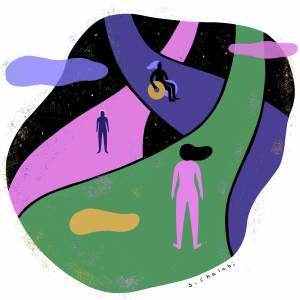Lam Thuy Vo on adversarial experiments everywhere
Lam Thuy Vo is a senior reporter at BuzzFeed News, where she digs into data to examine how systems and policies affect individuals.
We’re in a moment of upheaval, the kind in which we are not just lamenting the unrightful deaths of Black people at the hands of police or the disproportionate effect of this pandemic on BIPOC, but the kind in which we are naming the systems that brought about these deaths and are ready to upend them. The rallying cries made it clear: the existing structures must go.
(╯°□°)╯︵ ┻━┻
I’m deeply curious about where the particles of change will propel us after this initial momentum. People usually find their own ways to change social structures once ignited (and I believe they are all additive and can run parallel to one another). For some, change manifests in tearing down or fixing existing structures within flawed institutions. For others like me, it may take shape in the radical nurture, care, and creation of something new.
Just like many folks I’ve been thinking a lot about Toni Morrison’s quote about racism:
“The function, the very serious function of racism is distraction. It keeps you from doing your work. It keeps you explaining, over and over again, your reason for being. Somebody says you have no language and you spend twenty years proving that you do. Somebody says your head isn’t shaped properly so you have scientists working on the fact that it is. Somebody says you have no art, so you dredge that up. Somebody says you have no kingdoms, so you dredge that up. None of this is necessary. There will always be one more thing.”
What can nurturing and creation outside of the distraction of racism look like? What could journalists from underrepresented backgrounds accomplish outside of having to litigate their experiences? Outside of having to navigate white-dominant spaces in which they constantly have to convince people of the value of their ideas and work? Outside of having to fix the environments they have to work within?
In other words, what happens when you give BIPOC time and a peace of mind beyond the racism that distracts them from their work to expand their imaginations (even just temporarily)?
To me that means modeling a different system through radical small experiments within, outside, or in partnership with institutions. There’s the stubbornly inclusive journalism that City Bureau’s journalists create by teaching everyday Chicagoans how to file a Freedom of Information Act request in public libraries. There are the editors of Whetstone Magazine, a print and online publication that explores the origins of food and that claims a small but important space of defending the historical, familial, and personal importance of food. The magazine stands in stark contrast to the kind of foodie culture that erases all that people of color cherish about that which nourishes them. There’s Documented, a non-profit that documents immigrants and the policies that govern their lives, which has done an extraordinary job catering to the specificities of their audience by writing directly to them on Whatsapp.
The Internet is filled with chatter around divestment: divesting from police to social services, divesting from Bezos to Black-owned businesses, divesting from incumbent politicians to everyday people who are running for office, some for the first time. Maybe it’s a good time for us to push out new projects that model a different way of being.
I would love to see the creation of small enterprises that are buoyed by a solidarity economist’s mindset and less by a legacy power that media empires carry with them. I would love to see one-off projects that help us expand our imagination of what is possible. With that I don’t just evoke the kinds that become profitable models for how we do journalism, but also the ones that are designed to live a short-lived existence, and even the ones that “fail” gloriously in the most teachable ways.
What can an expanded mind, freed from distraction, dare to do?

This essay is part of CREATIVE FUTURES, a series of provocations by thinkers across the arts, documentary, and journalism on how to reimagine their sectors.